EPISODE #2 PART 1 THE HYPERBOREAN MYTH
https://nordiskradio.se/?avsnitt=aristogenesis-21-the-hyperborean-myth
Here follows the text from the first part of the episode:
In the previous episode of Aristogenesis we presented an overview of the early Indo-Europeans, the early Aryans. We followed their migrations from their first well-documented areas of appearance, at the steppes North of the Black and the Caspian Sea about 4.000 BC, into the whole of the European continent and to southwestern Asia. The coming of the Aryans was the most dramatic event in the history of the European continent and has for ever changed the anthropological landscape by re-defining and re-forming Europe into our Aryan Fatherland. The conquest and transformation of Europe was gradual and continued through millennia, as the different branches of the Aryan people came forth, developed their individual cultures by imposing the central patriarchal and upward, to Sky and Light, oriented features of their own character and tradition on the earlier inhabitants, thus evolving along more or less separate paths. The numerous Aryan tribes, seeds of the forthcoming nations and civilizations, sprang out and grew up as branches of the great oak of our race, and despite their accumulated differences and variations, they have always shared common fundamental characteristics and a uniquely distinct worldview manifest in their religious attitudes, their mythology and cosmogony and their philosophic contemplations: This remains only true as long as and at the extent that our peoples retain their basic racial purity, and also remain “true to themselves”, as dictated as a central imperative by the Tradition and the greatest Aryan sages: from Heraklit, Pindar and Apollo’s central directive in Delphi (“know thy self”), where he had slain the subterrestrial snake-monster of the pre-Aryan chthonic cult, and from the eugenic “Laws of Manu” in ancient India down to the Neoplatonic esoteric teachings of sages such as of Meister Eckehardt or Scottus Erigena and down to Goethe and Schiller. This essential authenticity and truthfulness to ourselves amounts to becoming conscious of and reaffirming our racial character: a character that derives from a common vibrant, imperishable and form giving inner centre: The eternal Soul of our Race.
The awakening to that racial self-consciousness has been described as the “second birth” of an Aryan in the ancient Tradition – and that was a prerequisite for somebody to be actually considered as an Aryan: One may be an Aryan by birth, but that is only a potential, which is only activated through an awakening to a higher racially determined consciousness, so that one may be entitled to be an Aryan indeed, an active and conscious member of the Race of the Solar Light, the Olympian Race we might call it.
During our podcast we will look closer at the period between the early establishments and migrations of our ancestors down to the emerging of the first Aryan civilizations at the dawn of history. Today, however, we wish to look further back in time and attempt to trace our ancestors before the archaeological spade www.aristogenesis.com www.nordiskradio.se undoubtedly detects them at the Pontic-Caspian steppes more than 6.000 years ago. As the time spans grow longer back into the Neolithic and Mesolithic ages, the archaeological evidence becomes scarce and it is then normally very difficult to draw specific conclusions. The available scientific evidence indicates, however, that the Pontic-Caspian steppes were not the original homeland where our ancestors developed into a distinguished race but a prolonged stopover, a base and a bridgehead that was established in the wake of a prior, ongoing migration further back in time, with their first origin at another and very distant centrum.
And the questions that naturally arise are: Where did they come from? Which part of our planet can we call our ancient, immemorial Homeland? Where is our true Urheimat? Our introductory hypothesis is, that our ancestors’ primordial home has been in the arctic north, in a region situated high up in arctic Siberia. We believe that our ancestors lived there for a very long period prior to 10.000 BC – and most probably under more moderate climate conditions than the ones dominating over these areas nowadays: Evidence through very different sources suggests that it was major geophysical events, that rendered that primordial fatherland uninhabitable, leading to the beginning of a migration southwards.
Our “Hyperborean” conjecture has hitherto mainly been an intuition well-underpinned by and echoing ancient scriptures, traditions and myths of our early ancestors, but in many cases even shining under locally and geographically unexplainable folkish survivals among Aryans living too far from the North: However that inner certainty and reasonable hypothesis does now tend to be magnificently confirmed by firm scientific evidence and research of recent years! So, although we may by an accumulated speed keep talking about a hypothesis or even conjecture, it is only the more specific details and instances, on which this term is justified, while there is no reasonable doubt anymore as to the existence of that remote Urheimat and the region where it was located.
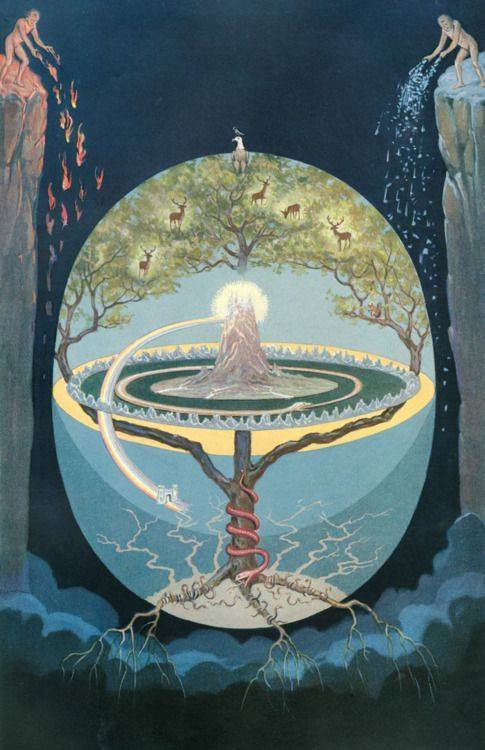
Let us briefly summarize the main points of that mentioned firm recent scientific evidence: In 2001 the archaeological spade unearthed some magnificent artefacts and tools in one of the northernmost regions of Eastern Siberia and around Yana river, which have been dated to at least 30.000 (!!!) years ago, and which bear unequivocal evidence of the oldest high culture we have signs of. Meanwhile the new fascinating science of archaeogenetics has developed, and thus in 2013 the genome and the Aryan (ANE, Ancient North Eurasian) identity of the famous Ma’lta boy (24.000 y.a. Near the Baykal lake) was identified, while further confirming that up to 30% of the ancestry of the American Indians comes from that Proto-Aryan source (the rest of that being Mongolic/Asiatic). This last amazing assertion verifies the early premonitions of a prominent sage, Hermann Wirth (in his monumental work ”Der Aufgang der Menschheit”, i.e. ”The Dawn of Humanity”), who could trace some solar eagle-like features on the culture and even physically so in particular on several leaders of the Indians. Even in that case of such an exotic admixture the typical pattern of an Aryan minority imposing its own spiritual character on a more or less alien majority and undertaking the leadership is verified.
So luckily, archaeologists could find some human teeth in that mentioned very old settlement high up in North-Eastern arctic Siberia around the mouth of Yana river (and Verkhoyansk mountain range), which have just last year been dated to have an age of 31.000 years – while scientists estimate that the communities had been there anyway at least as long as 40.000 years ago! Not at all surprisingly for those of us who are able to discern deeply and effectively employ a higher intuition, the examination has also in this case testified their Proto-Aryan identity!!! That is very crucial indeed – and a turning point as to what can be scientifically documented in our subject! Furthermore it has through that analysing of ancient DNA been possible to see, that there were no signs of inbreeding, which suggests the presence of a considerable population divided into several related tribes.
Pollen analysis has showed the presence of fauna associated with milder climate zones near the arctic coasts of Siberia, dating from late glacial times, 15.000 to 10.000 years BC, before these areas were claimed once more by tundra and perma-frost due to the fluctuation of the ice-sheets and major geophysical events.
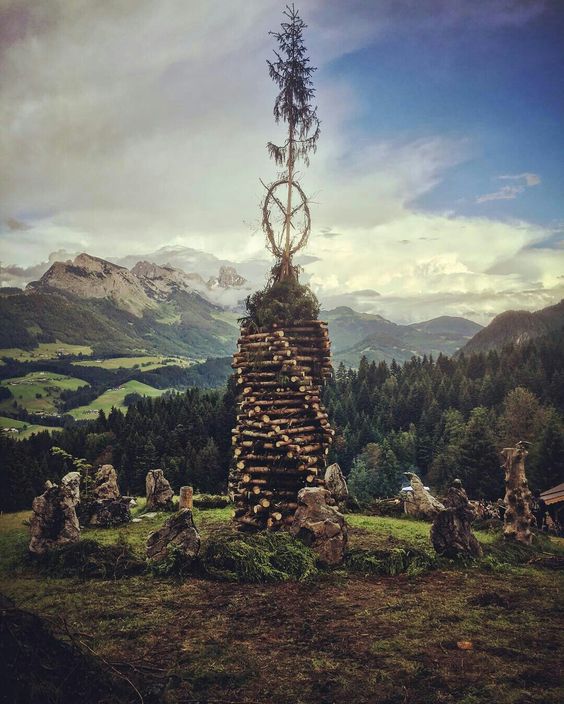
The size of the glaciers and the amount of water trapped in them do then dramatically affect the sea water level. As the glaciers grow or retreat, vast amounts of water are trapped or released, causing the sea water level to rise or sink and, subsequently, great areas of land to go underwater or emerge. Geological surveys of the circumpolar regions have showed that the bed of the Arctic ocean near the Eurasian shores is relatively shallow, and that during the last ice age vast areas of land, from the shores of west Siberia all the way to the Bering straits, were exposed and ice free for thousands of years, before they were flooded again during the last retreat of the northern glaciers. The rise of the water levels in the oceans, which in some cases was dramatic and rapid enough to be remembered by the primordial man, may have given rise to the legend of the Great Flood, that is encountered in the mythology of many peoples.
The chronological and geographical fluctuation patterns of the northern ice sheets over Europe and Siberia have been irregular and, accordingly, the climate has ranged from moderate to arctic during the glacial and interglacial ages. A moderate climate could have tempted early humans to venture in the far northern regions and later, as the geography, size and location of the glaciers shifted, they may have found themselves trapped for thousands of years, surrounded by impermeable glacier masses and protected by surrounding mountain ridges and coastal dry belts. Such an isolated remote scenery must have established some very special but quite stable conditions fermenting the development of a very distinctly and sharply oriented culture and spirituality, along with an accordingly subtle and highly flexible language. The flatlands around the mouth of Yama river and the Verkhoyansk mountain range of Siberia where evidence of Aryan genome has been discovered must have been that mythical landscape: the Aryan Urheimat!
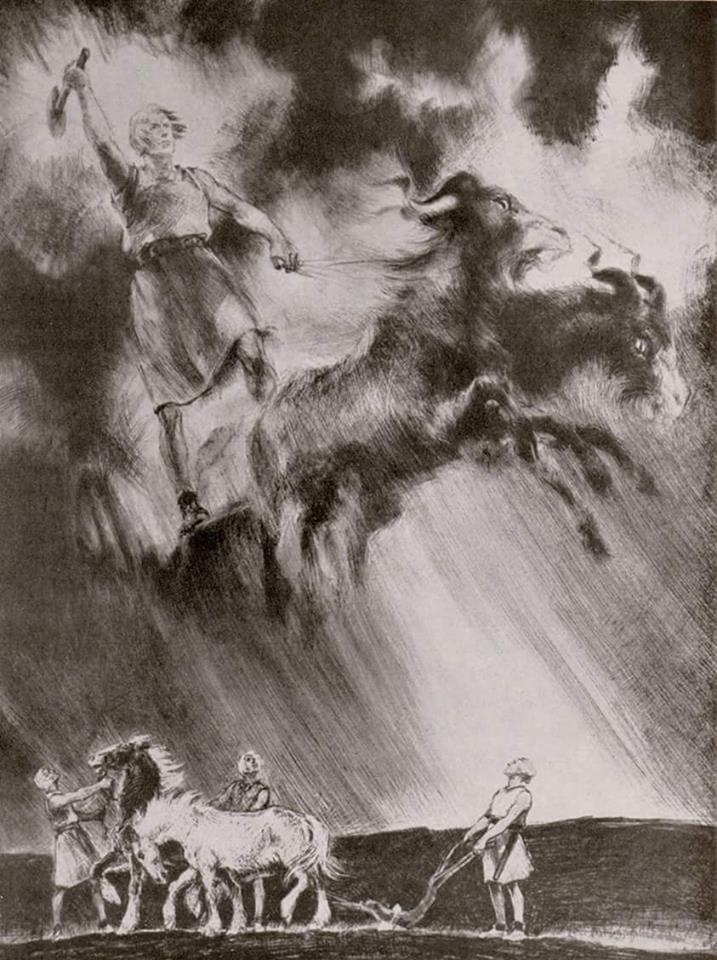
On the other hand it is obvious that the available building materials in the Pontic-Caspian steppes 6 millennia or more ago and especially in the circumpolar regions much earlier cannot withstand time, as did the great marble and stone monuments the Aryans built in the south. Still we have not only artefacts (remarkably including the famous Tocharian mummies of the Tarim Basin & their artefacts, dating back to 1800 BC), even from the Yana river as mentioned, but we have the famous kurgans, i.e. burial mounts, which to a great extent mark the course of the Aryans from the Pontic-Caspian steppes.
Moreover those Proto-Aryan communities have been on the move for thousands of years, before they finally settled in the areas we find them in historical times. Migrating people do not build cities, temples or monuments in a scale that may easily be detectible for archaeologists many thousands of years later!
Our ancestors’ language, however, tells another story. The elaborate structure of the ancient IE languages with their immense complexity and richness in grammatical and syntactical forms, capable of expressing the highest ideas with an abstraction endowed with the subtlest discernment and variation, accuracy and beauty, bear an unequivocal evidence of the fact, that our ancestors had reached a level of spiritual achievement which is not only unsurpassed ever since, but which is more or less unfathomable to the essentially dull and mediocre modern intellectuals.
These phenomenally elaborate linguistic faculties were analogous to the subtleness and complexity of their contemplations on all fields of thought of the highest quality as well as to the ever unsurpassable poetic creations, of which we have an echoing in the earliest masterpieces in Sanskrit and in Greek, such as the Vedic hymns and the unparalleled Homeric poetry.
The development of the IE language indicates that some other specific preconditions must have been in place.
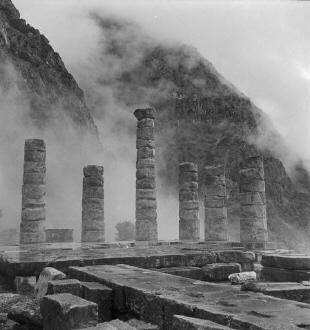
It’s interesting to remark that in the historical period the IE languages have been undergoing an opposite process, that of simplification and deterioration, which cannot be but a sign of a total spiritual and intellectual devolution process, which is notably mentioned and predicted in our ancient scripts. The birth and growth of such an elaborate and refined language as the IE may also require relatively stable conditions of existence, with time and resources for leisure and inner contemplation, which are unusual for migrating people as our ancestors were, long before they appeared at the Pontic-Caspian steppes. Some experts claim that the living conditions of the early hunter–gatherers or even the Neolithic farmers do not suffice either, as the daily and year round effort for surviving with the available means, resources and social structures of the time would not allow adequate leisure time for philosophical reflexion and spiritual cultivation.
We are through the result forced to assume that somehow such conditions must have been in place in our primordial, arctic fatherland, at least for the highest caste of the people. The means necessary for sustaining life must have been secured, as our ancestors dwelled in isolation for thousands of years in the magnificently dramatic and mystical environment of the arctic Homeland. As the archetypical structure of the Aryan societies was taking form, a caste of priests and scholars dedicated themselves to a spiritual and philosophical quest, developing rituals inspired by and centred around the most essential and dramatic event of the polar regions, the perennial disappearance and return of life giving Sun.
The Solar and celestial character of the culture and inner experience of our ancestors has been their central distinctive feature. Their central deity was the Sky-Father, incorporating their strictly patriarchal and combative spiritual and social constitution. This distinctive character and spirituality has then been carried by them from their ancient Homeland to virtually every corner of the earth, and distinguished them sharply from the matriarchal and earth-bound, chthonic and telluric people and cultures, they encountered as they spread out. Themes such as the arrival of the invigorating Sun and the related principle of Fire (Agni), the adoration of the Sacred Dawn, and so on, only understandable in the context of the remote Homeland of their ancestors, is central in the most ancient Aryan literature, the Hymns of Rig Veda from the Indo-Aryan Vedic tradition.
In our endeavour to cast more light on the subject we will now look for evidence about our primordial arctic fatherland in ancient traditions, sacred scripts, Aryan mythology and legends. As told in our first episode, we will not approach our myths as mere fairy tales, nor of course shall we grant them a mere naive scientific credit. Our myths are condensed ancient wisdom appealing directly to and evoking a direct perception, which is usually completely unfathomable to the purely intellectual analysis; they consist of symbols, images and allegories that can become shortcuts to inner inherent memory, induce rather than deduce recognition of basic or even of higher truths and eternal principles, as lively expressions of our racially determined archetypes and motives rooted in the depth of our soul.
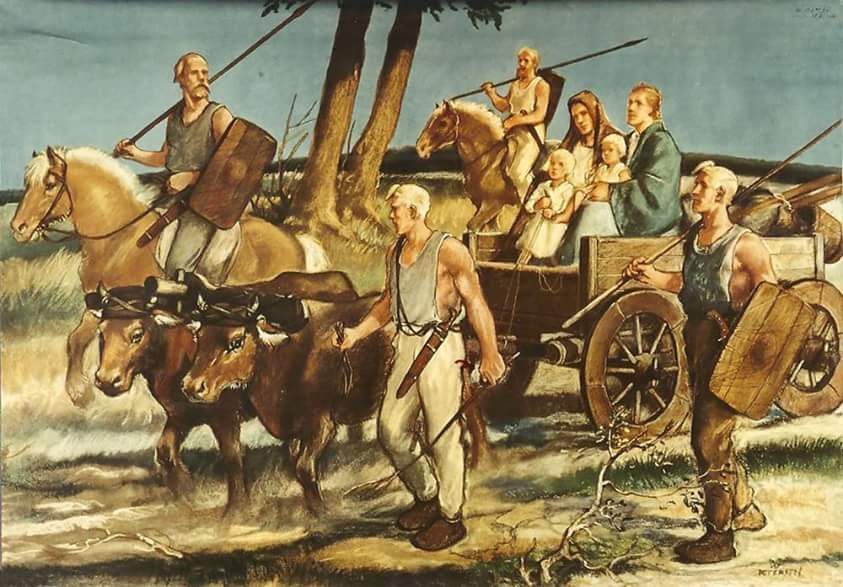
We shall begin with the Indo-Aryan Vedas, a large collection of religious and philosophical texts accurately preserved as oral traditions through times immemorial, until they were put to script in later, historical times. The Vedas are an invaluable spiritual treasure, a authentic and magnificent heritage from India’s Aryan origins and the best-preserved primordial heritage of the Aryans.
The oldest part of the Vedas, the Rig-Veda, was composed before the Aryan invasion of India 3.500 years ago, and it is a collection of splendid hymns and invocations, that reflect a deep and rather direct perception of the Cosmos, expressed in vivid poetic sensibility, genuine jewels of Aryan wisdom. In the Dawn Hymns of Rig-Veda addressed to Ushas, the Goddess of the Dawn, we find descriptions of natural phenomena and astrological observations only visible in the polar regions.
The hymns describe a dawn continuously lasting for many days, uninterrupted by sunlight, until it gave way to the rising sun. This magnificent phenomenon is exclusive for the circumpolar regions where it can take many days, up to two months, between the first appearance of daylight after the long polar night, and the rise of the sun.
The Rig Vedic Dawn was addressed in plural, not honorifically, but because it was made by many parts. The hymns speak of many dawns that appear one after another before the actual sunrise, dawns that lived in the same place, acted harmoniously and never quarrelled with each other. The dawns were continuous and inseparable, forming “a closely gathered band”, or “a group of dawns”, revolving round and round like a wheel, reaching the same goal, each dawn following its own destined course. The Rig-Veda speaks also of two different couples of Days and Nights. The first one represents the ordinary days and nights and the second is a distinct couple by itself, where one Night and one Day form “the right and left side” of the Year, a clear suggestion of the polar night and the polar day.
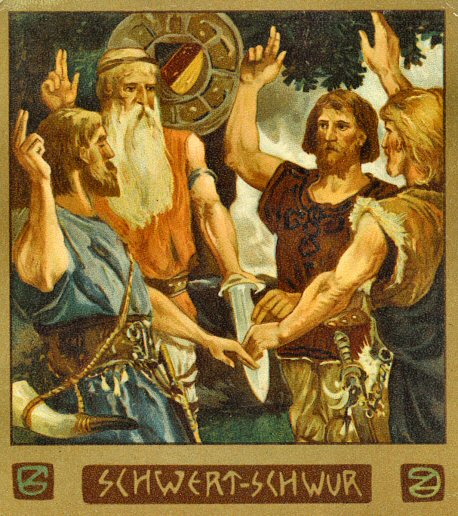
In the Rig-Veda the god Indra is said “to uphold and separate by his power heaven and earth, like the two wheels of a chariot are held by the axle, turning the widest expanse like the wheels of a chariot”. The motion of the heavens is described like that of a wheel, where stars and constellations remain on the same altitude seemingly rotating around an axis, and where the constellation of Ursa Major lies always high, an exclusive feature of the heaven in the highest north. The idea of Cosmic Axis, like that of the Cosmic Tree, is an idea that permeates the Aryan Tradition, and always with deep and dramatic esoteric and metaphysical connotations – just think of Yggdrasil…
In the great Vedic epos of Mahabharata we hear of Mount Meru, the lord of the mountains, the abode of all Gods and the terrestrial North Pole of Hindu astronomy. As Arjuna, the central hero of the poem – whose name means white and clear – , visits the mountain, we have a revealing description of it, unmistakably referring to its polar characteristics:
“At Meru the Sun and the Moon go from left to right every day, and so do all the stars.”
“The mountain by its lustre overcomes the darkness of the night and can hardly be distinguished by day.” “The day and the night are together equal to a year for the residents of the place.”
The latter expression appears also in another Vedic text, the “Laws of Manu”:
“A human year is the day and the night of the Gods; the two are divided, the northern passage of the sun is the day and the southern is the night.”
The idea that day and night of the Gods last each for six months, the description of the half-year-long night and day, is common throughout the whole Vedic literature, which being very archaic is written in a language even older than Sanskrit (its predecessor), and must clearly be related to the actual experience by the composer(s) of the Vedas or a surviving tradition of their ancestors who did actually have that experience as their daily life.
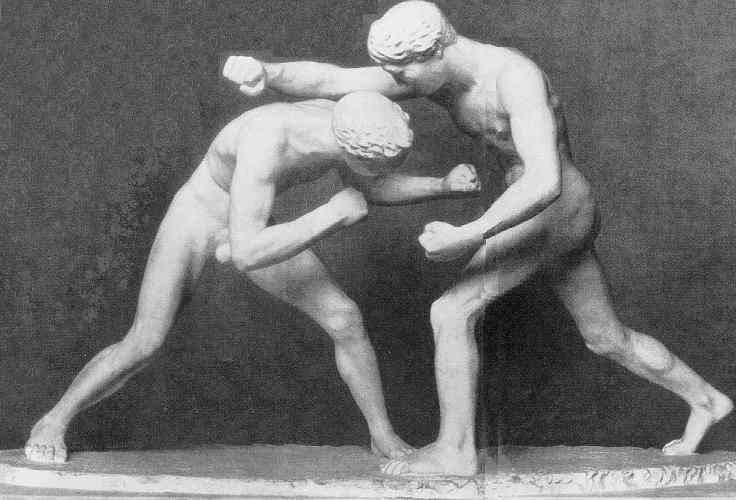
Our next source is the Avesta, the authentic sacred scripts of the Iranian Aryans.
The Avesta is a collection of religious and philosophical texts with roots dating back to the second millennium BCE. They are building up some fundamental theological and cosmological concepts, that later became the foundations of the Zoroastrian religion. Besides their apparent linguistic proximity, many aspects and the essential spirit of the Zoroastrian theology and worldview are very similar to those of the Vedas, indicating a common primordial religious system from the time before the divergence of the Indo- Iranians into separate groups. The Avesta, just like the Vedas, reflects the profound philosophical understanding and theological insight, the early Aryans had. Despite the occasional foreign influences, compromises and corruptions that occurred during thousands of years of religious practice and contact with oriental peoples and cultures, they are still a great and authentic source of information regarding our ancestors’ perception of the Cosmos.
Quite like the Vedas, the Avestan books contain many passages indicating that the Iranian Aryans were well aware of the polar day and night lasting six months each. There is a passage, however, in the first two chapters of the Avestan book of Vendidad, which directly refers to the ancient home far to the north and to the causes, that forced the Aryans to abandon it and migrate southwards. In this chapter Ahura Mazda, the Wise Lord, the supreme creator and sustainer of Cosmos, explains to Zarathustra how he created the original 16 lands of the Aryans, and how all of them were subsequently undermined and destroyed by Angra Mainyu, also known as Ahriman, the destructive and disorderly spirit incorporating what Savitri Devi describes as the powers of active death, the chaotic opponent to the forces of Cosmic Order in this beautiful Zoroastrian conception.
He explains how Airyana Vaêjo, the cradle and birthplace of the Aryans as the name signifies, the first and most blissful creation of Ahura Mazda, was invaded by severe winter and snow and converted into an icebound land, where harsh winter dominated for ten months and the summer only lasted for two. In the same chapter Ahura Mazda warns Yima, the great mythological progenitor of the Iranian people, of the fatal winters that are about to fall upon his lands, and how he should prepare for them in order to survive. The verses are capturing:
“22. And Ahura Mazda spoke unto Yima, saying, “O fair Yima, son of Vîvanghat! Upon the material world the fatal winters are going to fall, that shall bring the fierce, foul frost; upon the material world the fatal winters are going to fall, that shall make snowflakes fall thick, even an aredvî deep on the highest tops of mountains.
23. And all the three sorts of beasts shall perish, those that live in the wilderness, and those that live on the tops of the mountains, and those that live in the bosom of the dale under the shelter of stables.”
Yima is advised to build a Vara, an enclosure and place animals and seeds to escape the harsh winter. The shelter is prepared and Yima asks Ahura Mazda: “O Maker of the material world, thou Holy One! What lights are there to give light in the Vara which Yima made?”
Ahura Mazda answered: “There are uncreated lights and created lights. There the stars, the moon and the sun are only once (a year) seen to rise and set, and a year seems only as a day.”
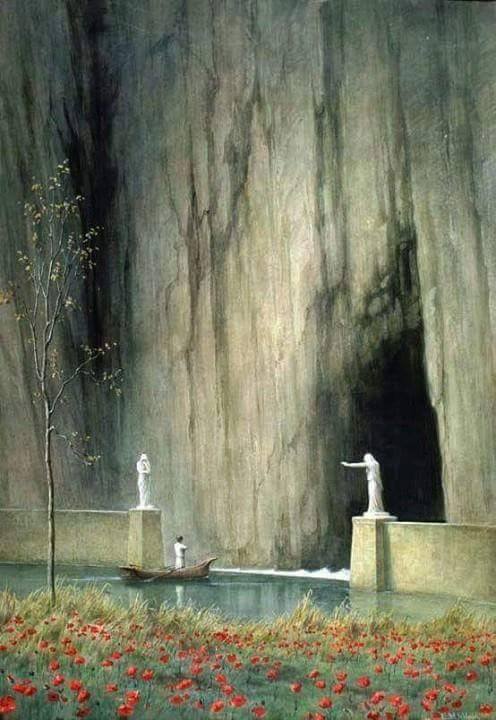
The memory of this land survived, often romanticised, in the historical times, and the Aryan descendants of the Hellenic and Roman antiquity called it “Hyperborea”, the land beyond the Northern Wind (Boreas). In Hellas the god of Light, Music and Harmony was the Hyperborean Apollon, and his priestesses at the holy island of Delos were the Hyperborean virgins…
By that time it was already a legend and an enigma, a vague remembrance that excited the curiosity of historians and inspired the poets, but that will be the subject of our next episode.
Up to this point we have been looking for concrete evidence in our ancient traditions. By no means, however, is it our intention to diminish and simplify our myths into vague historical hints or rationalize them into dry scientific data devoid of higher content. Our myths are a legacy inseparably integrated with our traditions, and our traditions become folklore and customs that put us in touch, as we practice them, with that same mythical timeless source of genuine essence and life, that gave birth to our myths.
In our people’s psyche Winter and Summer Solstices still bear elements of that mystical cosmic essence and Aryan spirituality, even at an unconscious level. This dramatic astrophysical phenomenon has had central importance for our ancestors, and it was celebrated with religious rituals and festivities throughout the ancient Aryan world. It demonstrates our Northern origin, as it is only there, our primordial ancestors could observe, receive and interpret the Solstice as a decisive cosmic event with actual impact on and significance in their lives. Only in the circumpolar regions can one behold the Solar circles in their full scale and magnificence, which inspired our ancestors to partake in the Sun’s eternal struggle against the long, polar darkness and recognize the cosmic analogy and the counterpart of this struggle within ourselves and in our societies too.
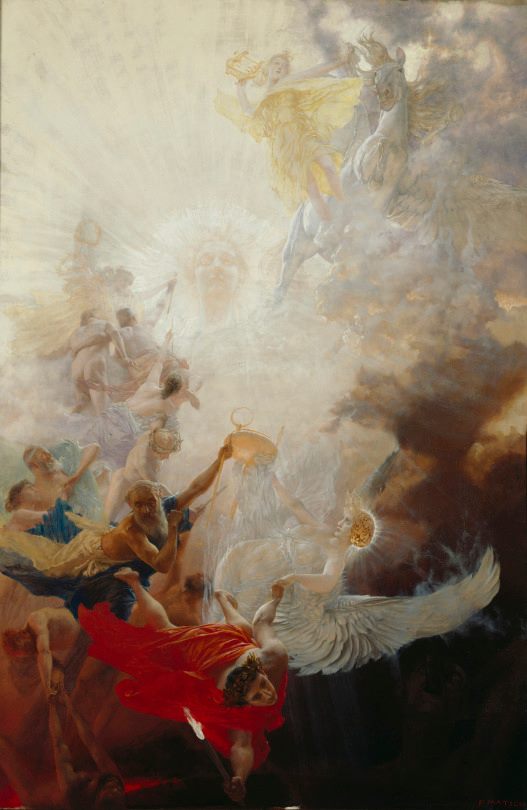
The reference to that primordial arctic origin becomes even more unequivocal and definite when such solstice-bonfires are lit in the South, as for example many villages in Greece still keep it as a holy tradition, they received from their forefathers – simple illiterate people, for whom life and Tradition cannot prosper apart, for whom the retainment of such traditions is just self-evident!
We shall have succeeded to our target with these podcasts, if we contribute to raise such an unconscious up to the light of a new vigilant Aryan Consciousness and Will!


